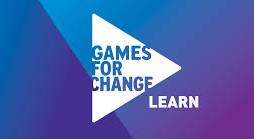Dive Brief:
- The 2017 Horizon Report from the New Media Consortium and CoSN identifies the concepts of "coding as literacy" and STEAM as the major trends driving classroom tech in K-12, according to EdTech: Focus on K-12.
- NMC Executive Director Eden Dahlstrom says that "coding as literacy" and STEAM are topics that work in tandem, with each promoting creative tech use and more inventive thinking, experimentation and revision.
- In the mid- and long-term, the report sees analytics, the redesign of education spaces, and the adoption of "deeper learning" approaches impacting K-12, noting that classroom tech should increase the quality of access, convenience, innovation, teaching, and digital skills.
Dive Insight:
Aside from preparing students to be productive citizens, public education's chief role was once to also prepare the bulk of young people for blue-collar work in manufacturing, retail and other industries. But as the labor market in those areas shrinks due to automation, coding is likely to rise in their stead. Both the Obama and Trump administrations have recognized this in their own ways, with the latter announcing Monday a new initiative to pump $200 million in annual grants into STEM education that will be paired with an additional $300 million from companies including Amazon, Facebook, Google, Microsoft and Salesforce.
But alongside the push for more coding skills in schools has come a call from employers for students with a better grasp on "soft skills" around creative and critical thinking, teamwork, collaboration and communication. By adding the arts to STEM, thus creating STEAM, educators can better incorporate those skills while also bringing some focus back to subjects like music and the fine arts, which have often been overlooked amid the rise of an assessment culture in schools. Much of the arts can tie directly to core subjects like math and the social sciences — it's just a matter of effectively making that connection with students. But doing so can ultimately raise interest in STEM in the long run.







 Dive Awards
Dive Awards





